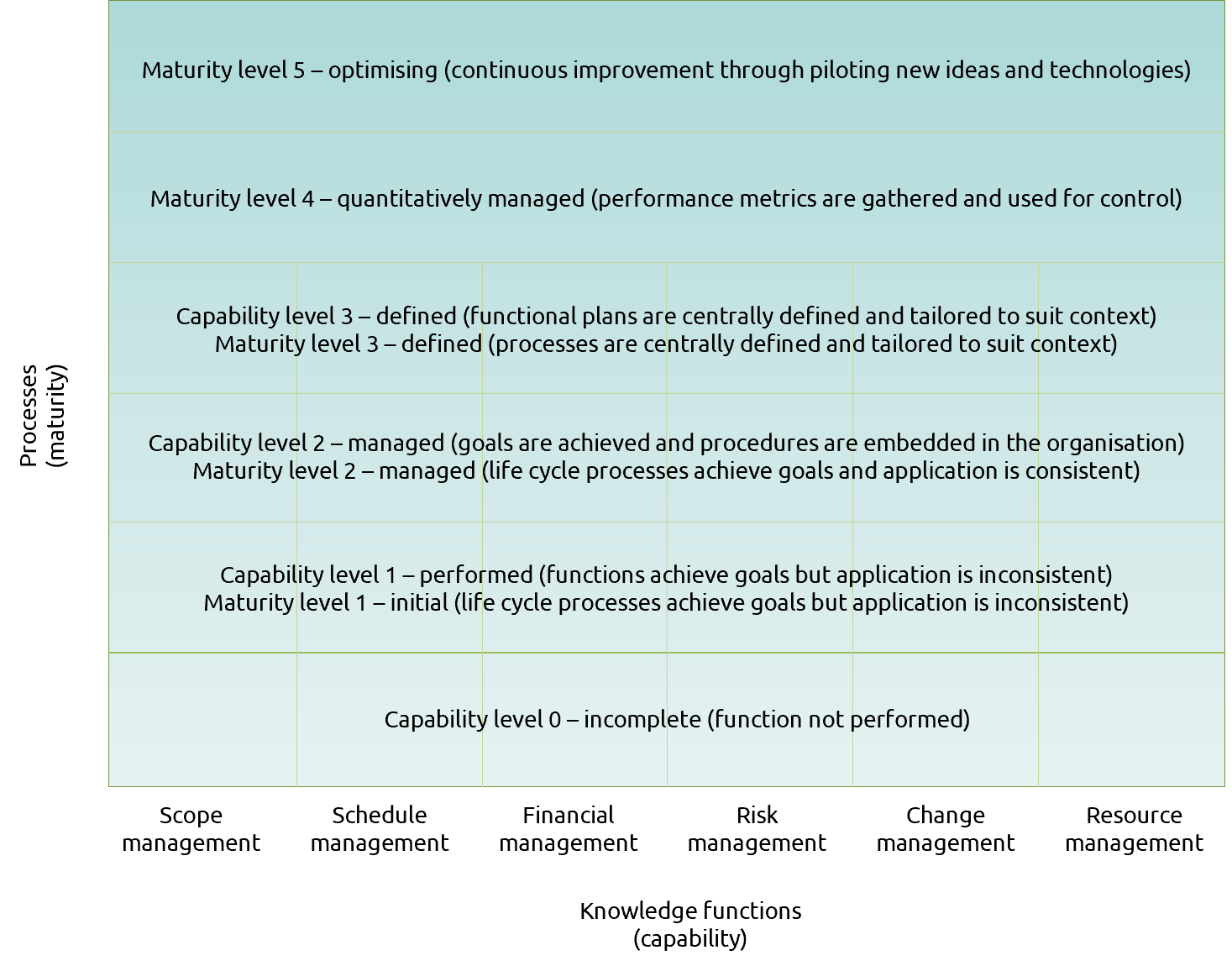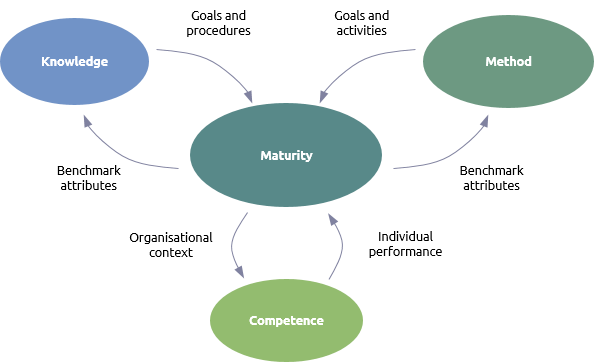The purpose of a capability maturity model is to provide guidance in the development of an organisation’s ability to deliver projects, programmes and portfolios effectively and efficiently. This can be viewed in two ways: internally or externally.
Viewing capability maturity internally is simply about developing the organisation’s ability so that more projects and programmes deliver their objectives (effectiveness) and less investment is wasted (efficiency). A large proportion of the benefit of developing capability maturity for internal purposes is achieved simply by examining internal processes and making sure they are embedded in the culture of the organisation. Even a poor or inappropriate maturity model can act as a catalyst for this improvement, although the more appropriate the model the greater the stability and effectiveness of the resulting improvement.
Viewing capability maturity externally concerns the reassurance of stakeholders. For example, where a customer is about to invest in a project or programme that is to be delivered by a third party, they will be more confident in the performance of a third party that has demonstrably achieved a high level of capability maturity. This external view implicitly requires the capability maturity of different organisations to be compared, i.e. they should have been assessed against the same model.
Clearly, the best use of capability maturity would be where organisations were assessed against the same model for external purposes but there was sufficient flexibility within that model to account for the difference in context of each organisation’s P3 management.
The high level attributes in the capability descriptions should be read in conjunction with the corresponding function particularly when interpreting the attributes in the context of the difference between projects, programmes and portfolios.
The underpinning principle of Praxis is that P3 management comprises a broad set of components that are assembled and tailored to suit the context of each unique piece of work. The Praxis capability maturity model aims to be flexible enough to be adaptable to different contexts while being consistent enough to allow comparison between different organisations.
This is achieved by setting the attributes that describe different levels of maturity at a fairly high level. These attributes are supplemented with advice on their application. The result is not dissimilar to the approach taken by ISO9000, where each organisation can develop a quality system to suit its own context but, provided the quality system aligns with the ISO9000 principles, can still be accredited to a universally accepted standard.
The Praxis maturity model adapts the principles of the CMMI® model by applying separate measures for capability and maturity. The diagram below illustrates the matrix of capability and maturity, only a sample of the functional framework is shown.

The capability side of the model follows the structure of the functional framework so that capability can be developed and assessed on a function by function basis. An organisation will identify the functions that are appropriate to its context and develop its capability accordingly.
Maturity is achieved by developing capability and then implementing the life cycle processes that apply the functions in an integrated and co-ordinated way. Maturity is increased by developing capability in the relevant functions and then embedding the appropriate methods (project, programme or portfolio).
To aid with improvement, Praxis describes each function using a set of indicators. For each indicator, attributes are described that illustrate the different levels of capability. Because the fundamental principles of managing functions are very similar a large proportion of the indicators and attributes are common to all functions. These are collected together as the generic goals of capability. Indicators and attributes that relate to specific goals are then described for each function.
Maturity levels are described for each life cycle process. This does not imply that an organisation’s maturity can be defined for individual processes. An organisation will tailor its overall life cycles according to the context of its projects, programmes and portfolios. Maturity is then judged to be the level achieved in all the appropriate processes.

The capability maturity model derives its structure from the knowledge and method sections. In return it describes a series of attributes that describe a standard development path for functions and processes.
Capability and maturity at level 2 require competent people so the competencies in Praxis are pitched at this level. The maturity model provides an organisational context for the development of individual competencies.





